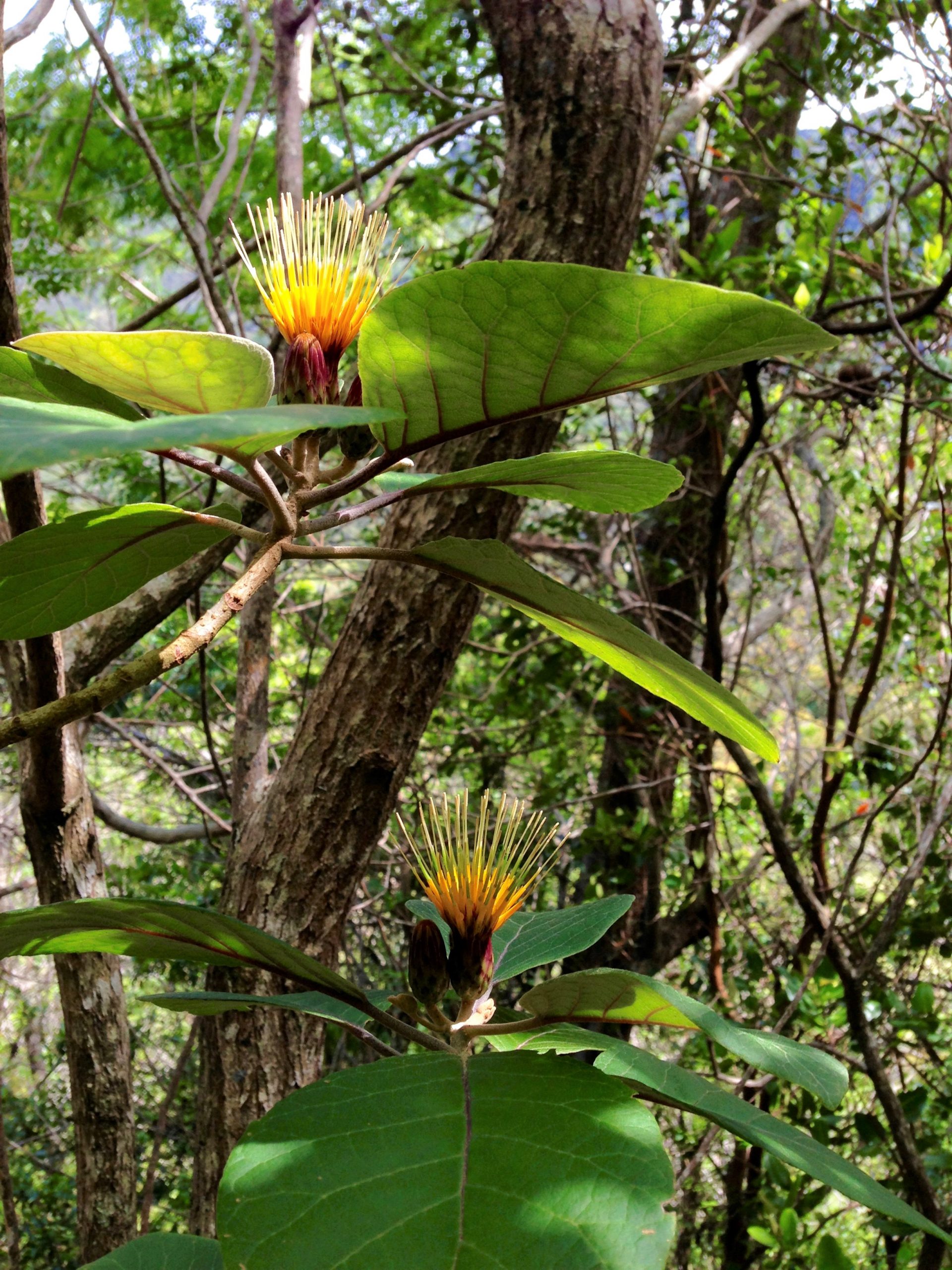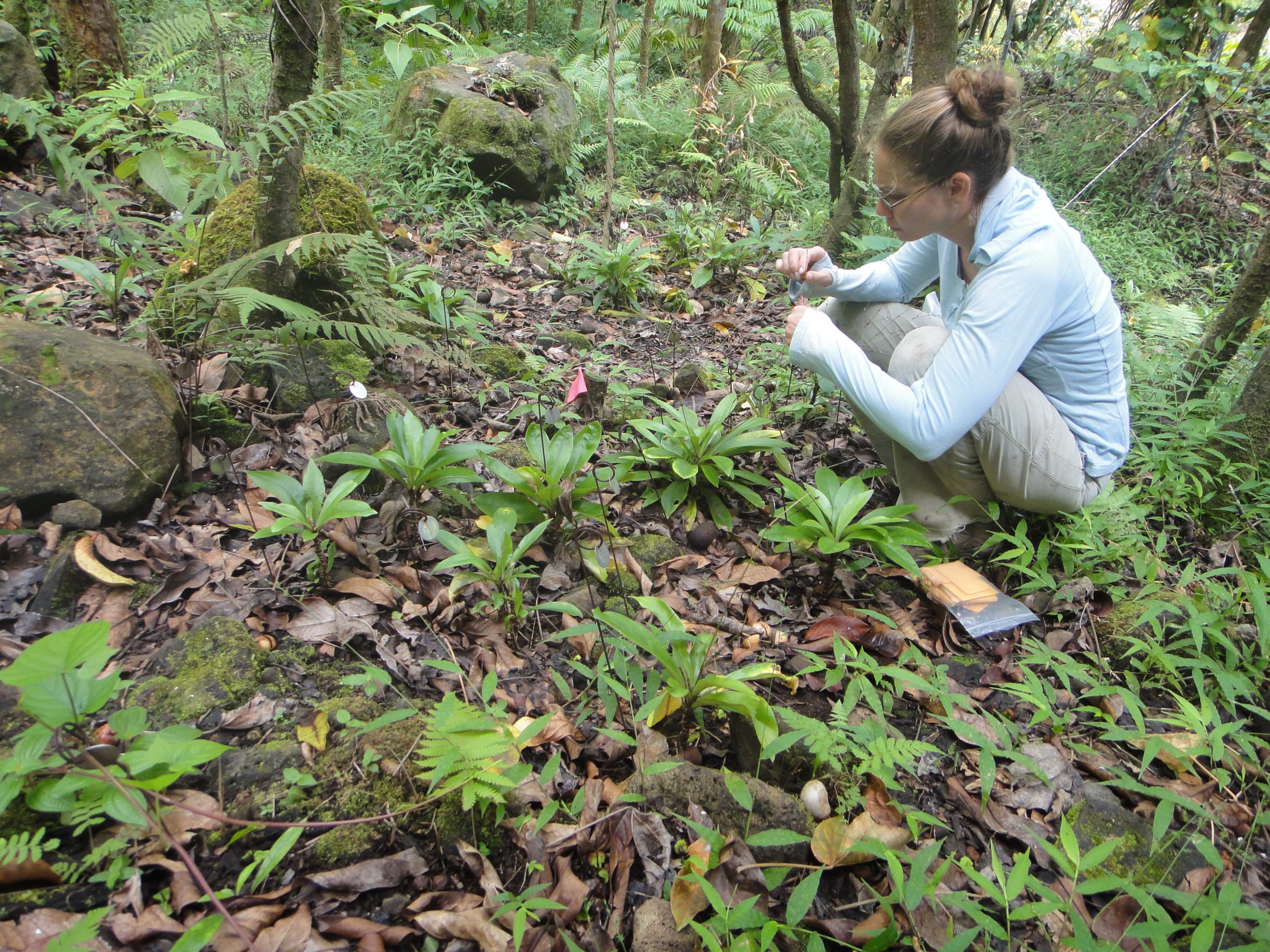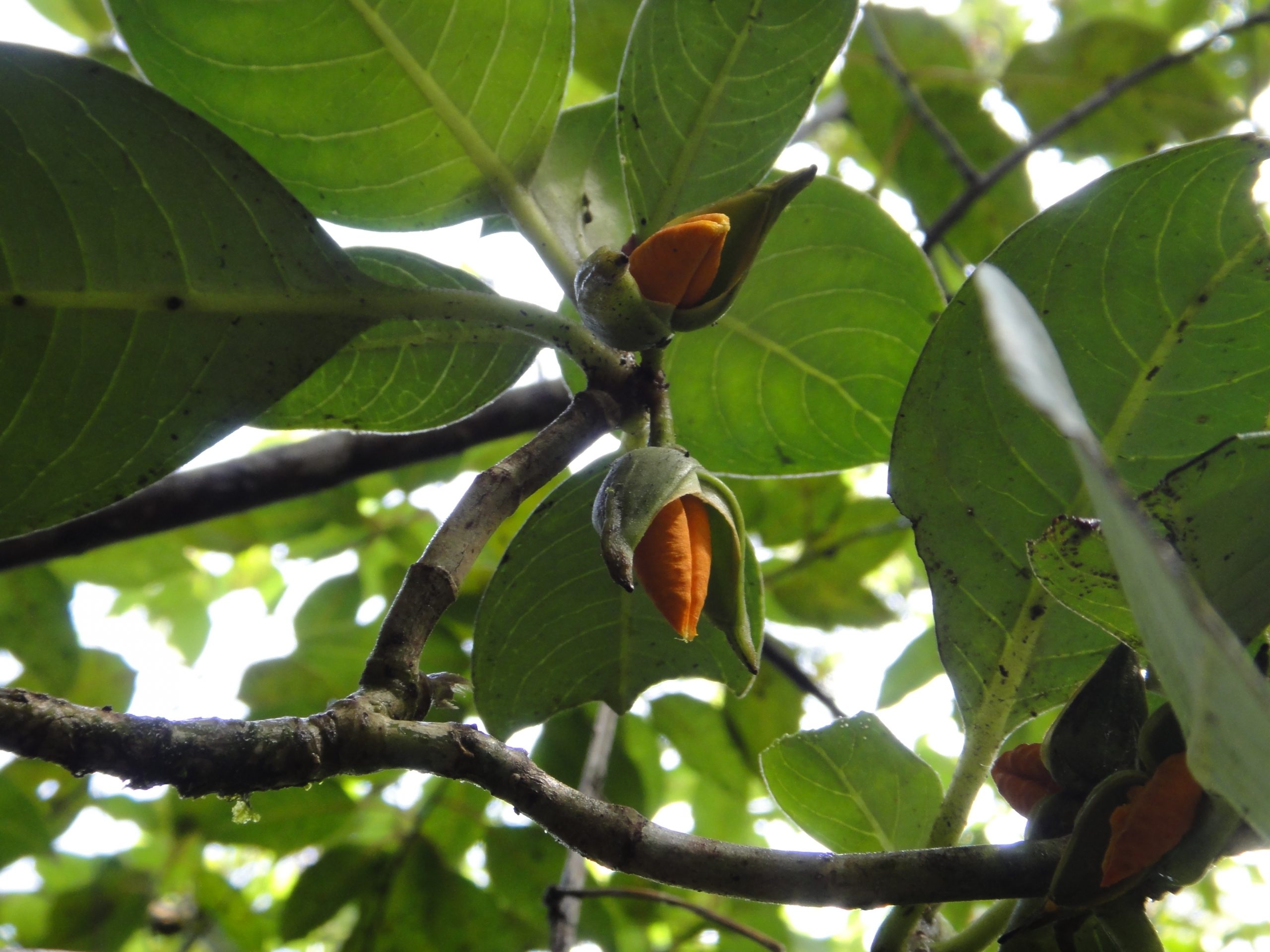Lauren Weisenberger
This month’s conservation champion, Dr. Lauren Weisenberger is an exemplary spokesperson for rare plant conservation. Working with the critically endangered Schiedea kaalae, she learned first-hand about the challenges of seed germination and reintroduction. In 2016, Dr. Weisenberger received the David Given Award for Excellence in Plant Conservation. Her professional accomplishments are many including her service on the Hawaiian Plant Specialist Group of the IUCN Species Survival Commission (SSC) and the Advisory Council for Laukahi: The Hawai’i Plant Conservation Network. She co-authored the Hawaiʻi Strategy for Plant Conservation and recently coordinated the Hawai’i Rare Plant Genetics Workshop, where among many topics discussed was the important concern of hybridization. Lauren’s unyielding support and collaborations across many stakeholders is truly an essential formula for Saving Plants. We are so grateful for you, Lauren!
When did you first fall in love with plants?
When I was a kid in Pennsylvania. I loved hiking around the forest with my grandfather in the Pocono Mountains and along the Pocono Creek, as well as picking blueberries and walnuts. Looking back, I guess those were my first fruit collections!

What was your career path to the U.S. Fish and Wildlife Service?
I began my career in plant conservation in Hawaiʻi at the Lyon Arboretum Seed Conservation Laboratory as a student hire, learning about seed germination and storage behavior of plants native to Hawaiʻi from Alvin Yoshinaga. That position grew into a fulltime job. We eventually started another seed bank for the Army Natural Resources Program on Oʻahu, where we were able to imbed the seed banking operations into the rare plant management to support reintroduction and restoration efforts for many endangered plant species.
When I left the program after 14 years with the U.S. Fish and Wildlife Service, I wanted to utilize what we had to learned to support more plant conservation efforts, and to have the opportunity to learn from and work with more conservation practitioners.
Also, in 2012, prior to joining USFWS, I was fortunate to work with a colleague on a project for the National Tropical Botanical Garden, Lyon Arboretum, and the State of Hawaiʻi, to determine whether a plant conservation network in Hawaiʻi would be beneficial. The Hawaiʻi Strategy for Plant Conservation was then drafted, building off the Global Strategy for Plant Conservation, and Laukahi, the Hawaiʻi Plant Conservation Network, was established in 2014. These experiences helped me to understand how critical collaboration and communication are for conservation. In 2016, I started my current position as Plant Recovery Coordinator at the Pacific Islands Fish and Wildlife Office, working on recovery efforts for 442 threatened and endangered plant taxa in Hawaiʻi and the Mariana Islands — almost half of all the listed plants.
In your experience, what are some of the pressing conservation needs related to Hawaiʻi’s rare and native plants?
In Hawaiʻi, I think invasive species are the primary drivers of extinction. Invasive species directly consume, damage, or outcompete native plants, and they indirectly degrade and destroy native habitats. We need better tools to control a large suite of invasive species, especially plants, invertebrates, and diseases. We also need more support to implement large-scale controls for wide-spread invasive species, such as the rodents and feral ungulates that prevent the establishment of resilient habitats and populations of plants where they are present. We need to prevent further decline of habitats in order to have healthy watersheds and biodiverse, functioning ecosystems.
I think another need is to strengthen the connection between people and plants. It is so hard to access a lot of natural places, and the hikes can be challenging. Many people do not see native plants regularly, and it is hard to form a personal connection to them. I think that communicating the value and role that plants and people have for each other can benefit not only conservation efforts, but also the well-being and connection people have to plants and native habitats, especially those near where they live.
What new research or methodologies show promise in advancing the conservation needs of Hawaii’s rare and native plants?
We have made a lot of progress with ex situ tools and research, including seed storage, tissue culture, and cryopreservation. When the Lyon Arboretum seed bank started, there was not a lot known about long-term germplasm storage for plants native to Hawaiʻi. Now, thanks to amazing collaborations, including the formation of the Hawaiʻi Seed Bank Partnership, we have an idea about how well most species will store in seed banks, and we are working on tissue culture and cryopreservation protocols for the species that cannot store conventionally in seed banks long-term (i.e., exceptional species). This research has allowed us to secure species in ex situ collections, and buy us time to do the in situ habitat restoration. However, we need more technology, research, and resources to maintain healthy ecosystems for in situ habitats to prevent further population declines and reintroduce new populations and augment existing populations from the ex situ collections.

What are some of your current projects at the U.S. Fish and Wildlife Service? What successes or challenges have you encountered in your work?
This year we are working on several Recovery plans for over 100 listed plants, and an additional similar number of plants are going through their five-year status review. Currently, I am working on support and resources for the University of Hawaiʻi’s Plant Extinction Prevention Program (PEPP), which focuses on preventing extinction and recovery efforts for ~250 taxa endemic to Hawaiʻi that have 50 or fewer individuals remaining, and the State of Hawaiʻi Rare Plant Program, which works with PEPP and also supports a number of rare plant nurseries and ex situ facilities throughout Hawaiʻi.
I recently was part of an organizing committee comprised of partners from academic institutions and botanical gardens. We just completed facilitating a 10-part workshop series on how genetic and genomic techniques can be applied to rare plant management, using species examples from PEPP. We were excited to bring together groups of people from 80 different organizations — including students and faculty, conservation practitioners, landowners, government agencies, and non-governmental organizations — that might not have met or partnered before, but were eager to work together and learn from each other how to best utilize their research to help prevent extinctions and support the recovery of rare plants.
Many of the examples of questions or problems that PEPP presented are now being studied by the researchers who attended! And I cannot thank Dr. Joyce Maschinski enough for her participation and presentation during the workshop series, all of which provided perspective from examples across the country and applicable guidance for our preventing extinction goals.

What has surprised you about working with and learning more about rare plants?
There is so much to learn! When I first started working at the Lyon Arboretum Seed Conservation Lab, we could not get over how a single daily task, such as looking at germination assays, could lead to breakthroughs that are critical for species survival and recovery. It was astonishing to see how squeezing the seed of this species, or noting the color variation in the seeds of another species, could be the difference between knowing whether or not you have a backup germplasm collection of an individual. With the help of partners such as CPC, these useful observations eventually grew into protocols and best management practices that we hope build confidence and reliability in our seed banking collections.
I would not say that I am surprised, but I am incredibly humbled and grateful for all the amazing people tirelessly working on rare plants. Their perseverance and optimism provide the most creative ideas, collaborations, and results. The skills, expertise, and motivation of the plant conservation community, in the face of extinctions and lack of resources, are so inspiring and bring so much potential to all the future work to come.
What advice do you have for newcomers to the field of plant conservation?
There is so much to learn and observe and discover, that can really help save plants. So look, observe, study — but most importantly, ask questions and communicate. Don’t be afraid to reach out to someone, to ask questions, to speak up. Collaborate and share every chance you have, because that is how you make an impact.
What advice would you give to the public who want to learn more about how they can help save imperiled plant species?
There are many ways to help, no matter your interests or skills. From outreach and education supplies and curriculum to technology to field logistics, if there is a way to make any part of rare plant management a little more effective or a little cheaper, it can go very far. We have so many questions about the ecology of all these species, what they need to persist and thrive, and how to protect them. You do not have to be a botanist to get involved.